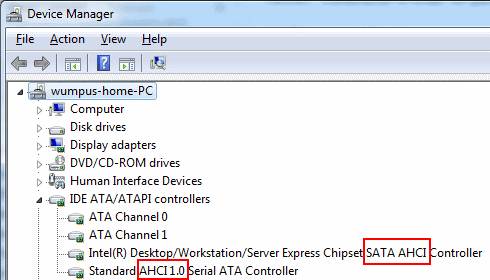Why NOT use AHCI (I should've posted this few years back, as now this is a bit less relevant):
It may work great on/with recent hardware but this hasn't always been the case.
You'll want to try it but if you find any mysterious issues it's good to remember to test without it. Some issues I encountered in past: failure to detect certain HDD models, bugs in Intel drivers causing crashes in some scenarios (they're prob fixed by now but I haven't tested latest versions extensively), jerky mouse, glitches in audio etc.
The point is, the legacy IDE has been tried and tested. AHCI and its features have matured over past few years but there may still exist some rare scenarios where, like plane crashes, many things need to happen in certain way/order for the plane to crash. These type of things will be resolved in time, but if you want to play safe, AHCI may need few more years. There's still new AHCI drivers released rather frequently and it's not all just new features. I saw someone who tried various versions say there can also be performance differences.
If you appreciate what's known a "known quantity" and "tried and tested" then maybe you'll want to think twice about AHCI. And so far the time I spent diagnosing bugs and testing the performance ... I do love being the free QA department for Intel. If they had actually put a "beta" or something somewhere that would've atleast warned me to stay away, but I foolishly thought their AHCI drivers and Option ROM's etc were as solid as the CPU's.
With consumer desktop HDD's and SSD, my own research suggests that to benefit from AHCI you'll want a 6 GB/s SATA port and SSD, or you'll want to use HDD thats known to show improvement with NCQ. I've tried Samsung, WD, Maxtor consumer SATA HDD with the AHCI and in my system there was no performance improvement, the opposite infact for some scenarios that are typical for desktop workstation IO patterns.
The article linked above has got partially different results from mine, and most of the issues I mentioned have no doubt been fixed by now, but keep this post in mind when getting excited about new innovation in storage technology. The developers testing & QA may have been severely limited compared to what PC hardware you can use with the new technology.

https://www.intel.com/content/www/us/en/support/articles/000024558/memory-and-storage/intel-optane-memory.html may help – K7AAY – 2018-08-27T18:36:43.243